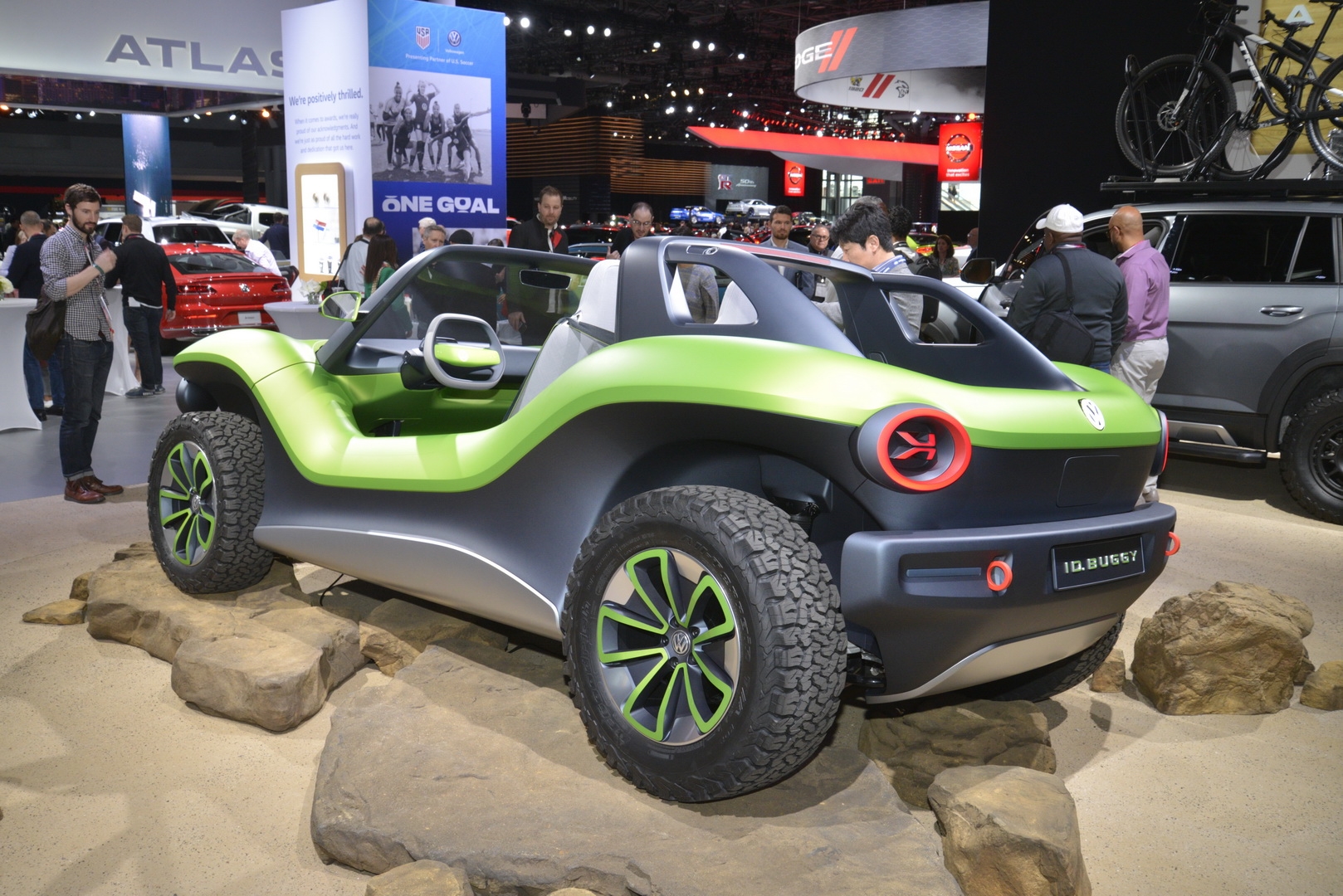In looking at how this concept came to be, a brief history is warranted: VW’s iconic silhouette of the Beetle was penned by Dr. Ferdinand Porsche in 1938, and since then, it has become the people’s car yet void of a memorable design. Built on a simple, yet reliable platform, it led Bruce Meyers to create a fiberglass body kit in 1964 that would go on top of a VW Beetle of the time. VW then decided to go with their own try at a concept, creating the ID. Buggy Concept, featuring an electric motor and a good enough battery to carry drivers where they needed to go.
In terms of design, there’s no roof, no doors – but so much more! A prime example of “anything is possible,” the e-buggy concept, presented at this year’s 2019 Pebble Beach Concours d’Elegance, fuses a politically correct electric drivetrain with a highly emotional body style, evoking fond memories of all things surf, sun and sand and a mix of both modern and retro.
A metallic fern green crowd-stopper, the concept features 18-inch all-terrain BF Goodrich tires, which offer plenty of grip and decent ride comfort. Tipping the scales at about 3,300 pounds, and powered by a single rear-mounted motor that makes 201 horsepower and 228 lb-ft of torque, the Buggy features a 62-kW-hr battery pack which will supply enough juice to deliver a full-charge range in the neighborhood of 130 miles. VW engineers are also through this concept experimenting with all-wheel drive by fitting an auxiliary motor rated to 95 hp to the front axle, which is expected to further enhance off-road traction and shave more than a second from the car’s acceleration time.
The Buggy concept shares its 108.9-inch wheelbase and MEB small car electric vehicle platform with the production model of VW’s new ID 3 hatchback, resulting in a huge interior boasting tons of legroom and cargo loading ability.

VW has noted that the ID Buggy presents a unique opportunity for external manufacturers. “It can be built by startups in a wide variety of versions.” One of the external manufacturers VW has in mind is a company called e.Go. Founded in 2015, its initial claim to fame was its electric StreetScooter panel van operated by Deutsche Post. Two years later, the company announced its e.Go Life plug-in city car.
If this zero-emissions Buggy gets the green light, it will likely take about two and a half years before it will be ready for production. In achieving this production, some scenarios are being explored. Those include the cooperation with Magna, part of a line at VW’s Mexican assembly plant in Puebla, or the former Karmann works in Osnabruck, Germany. In terms of number of units to be built, that, too, remains uncertain with possibly anything from 10,000 to 20,000 units annually over a multiyear timeframe and carrying a base price in the neighborhood of $30,000.
Considered clearly a weekend special more so than a daily driver, this vehicle, if reaching production, would be about as affordable as the original beach buggy created by Bruce Meyers back in 1964, according to BMW officials.
This all-terrain machine constructed within by waterproof materials, this concept, although small in size, boasts considerable comfort.
An electric beach buggy likely headed to production, this concept channels the past while giving many hints to the future! No roofs-no doors and taking a definite quantum leap, this Buggy is summer fun personified. Keep an eye on its possible path forward to production!

